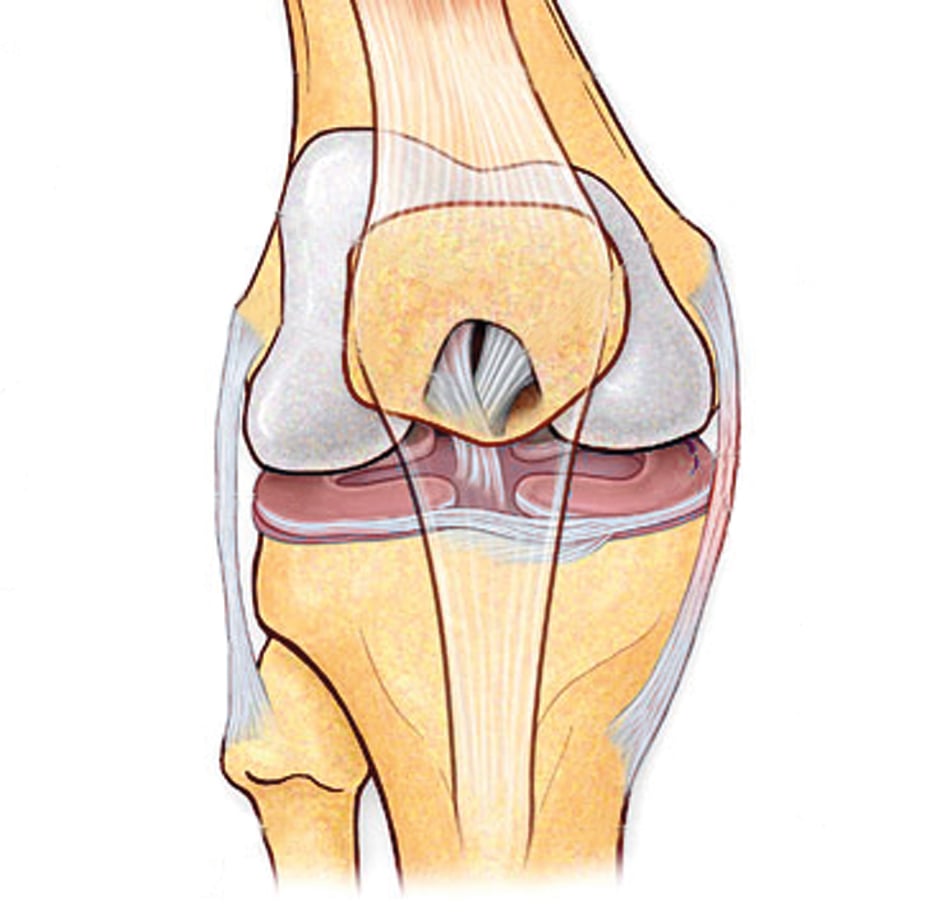
Issue 046
February 2009
By Rosi Sexton.
What is it?
The menisci of the knee are two pads of cartilage that sit between the thigh bone (femur) and the lower leg (tibia). They cushion the knee joint and help to prevent friction between the ends of the bones. When people talk about torn cartilage they are usually referring to a tear of one of these menisci. This can cause pain, inflammation, and often clicking or locking of the joint (this is where the knee joint gets stuck in one position). It may also feel unstable, as though it is about to give way.
Specific examples
Patrick Cote was suffering from an existing meniscus injury going into his fight with Anderson Silva at UFC 90. In the third round he collapsed, clutching his knee. He later said that he had re-injured the meniscus. It is uncertain from what has been made public whether there may also be any other damage to his knee, such as a tear to one of the ligaments.
How it happens
Many meniscus injuries involve rotation and sideways forces at the knee joint. Sideways impact on the knee from a takedown is one example. Coming up from a squat is another possible mechanism of injury. Chronic damage to the meniscus may also build up over time -– from running on hard surfaces in poor footwear, for example. This causes soreness and inflammation in the knee and leaves it more vulnerable to an acute injury.

Treatment
If you suspect that you may have damaged your knee, treat it immediately with RICE (Rest, Ice, Compression, Elevation) and see a doctor, physiotherapist, osteopath, or other sports injury professional as soon as possible for advice.
Small meniscus tears may be treated initially with rest, anti-inflammatories, and physical therapy. If it doesn’t improve, or there is significant locking of the knee joint, surgery is likely to be needed. This is usually conducted via an arthroscopy (keyhole surgery), and for a small tear might only involve trimming the torn portion of the meniscus. Possibilities for a large tear include repairing the meniscus, or removing it altogether. This final option is now avoided where possible because it can lead to arthritis.
How long can a fighter with this injury expect to be out for?
An uncomplicated trimming of a meniscal tear or a complete removal of the meniscus has a typical recovery time of around six weeks. A meniscal repair has a longer recovery time – potentially four months or more before returning to full activity. If there is other damage to the knee joint, such as a ligament tear or damage to the cartilage at the ends of the bones, then it could take even longer.
What long-term problems is it likely to cause?
The most commonly recognised complication when a meniscus is removed is the gradual development of arthritis in the knee joint because of the extra wear and tear on the surfaces of the bones. A repair needs to be looked after, and returning to weight bearing activity too soon can lead to a recurrence of the problem. Any surgery on the knee can alter the biomechanics of the joint. Consultation with a physiotherapist and carefully rehabilitating the knee before returning to training can minimise potential problems.
Professional fighter Dr Rosi Sexton PhD is a sports therapist and osteopath in training based in Manchester, England. She has fought in countries such as Russia, Canada and the USA, and is ranked as one of the top competitors in her weight class. For more information go to www.rosisexton.wordpress.com










